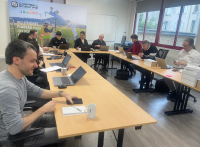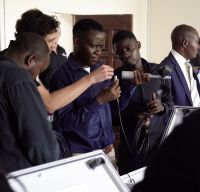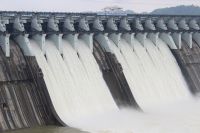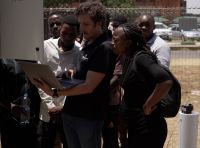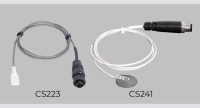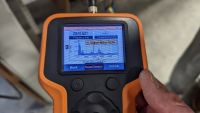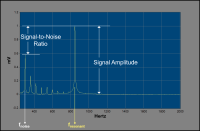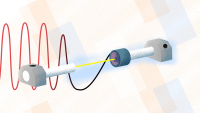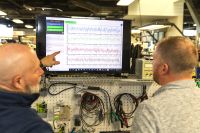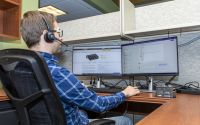The Campbell Scientific Blog Your source for useful how-to information and helpful expert advice
Displaying 1 - 20 of 151 articles
How to Equip Your Workforce for Success Through Training
Author: Vim Mistry | Last Updated: 03/25/2024 | Comments: 0
Continuous learning in the environmental monitoring industry empowers individuals and organizations alike, fostering innovation, user engagement, and a growth mindset. If you haven’t read our “How Do You Put Learning into Action?” blog article, I encourage you to do so. In this article, we’ll shift... read moreHow Do You Put Learning into Action?
Author: Vim Mistry | Last Updated: 03/11/2024 | Comments: 0
While continuous learning in the field of environmental monitoring is important, it’s even more critical to put that learning to practical use. Understanding the benefits for both employees and organizations to stay up to date on technology, expand expertise, and improve performance is one thing.... read moreA Closer Look: Resolving Dam Data Discrepancies
Author: Eric Schmidt | Last Updated: 03/05/2024 | Comments: 0
Did you read our Southwest: Solving the Mystery of Erroneous Dam Monitoring Data case study? Want to get some more details? In this article, we’re going to take a closer look at that case study. If you haven’t read the case study yet, please do... read moreCalibration Essentials: Importance
Author: Michael Jacobs | Last Updated: 03/04/2024 | Comments: 1
In the world of measurement and data acquisition, ensuring instrument accuracy is paramount. Regular calibration is essential to maintaining the integrity of your measurements and safeguarding your operations. But what exactly is calibration, and why is it so important? In this three-part blog series, we’ll explore... read more4 Reasons Why Continuous Learning Is Critical for Environmental Monitoring
Author: Ramatoulaye Nabi | Last Updated: 02/01/2024 | Comments: 0
In the ever-evolving landscape of environmental monitoring, staying ahead of the curve is not just a luxury but a necessity. As technology advances at an unprecedented pace, organizations must equip their employees with the skills and knowledge to effectively use emerging tools and navigate the... read moreHow to Easily Replace and Update a CS223 Sensor Head
Author: Ajay Singh | Last Updated: 01/15/2024 | Comments: 0
Campbell Scientific’s CS223 Pt-1000 Class A, Back-of-Module Temperature Sensor (discontinued effective 31 October 2023) has been replaced by the CS241 Pt-1000 Class A, Back-of-Module Temperature Sensor. When needed, you can replace the CS223 sensor head with a CS241 head without having to replace the entire... read moreWhy Is the CR6 the Preferred Automated Monitoring Platform for Geotechnical Applications Worldwide?
Author: Michael Adams | Last Updated: 01/08/2024 | Comments: 0
If you’re not using a CR6 Automated Monitoring Platform for your geotechnical application, you may be missing out on some key benefits that could help ensure the success of your instrumentation and monitoring network. Based on my 30 years of experience with data-acquisition systems, I’ll... read moreTips to Troubleshoot and Optimize Large RF Networks: Part 2
Author: Nathanael Wright | Last Updated: 12/20/2023 | Comments: 1
In this blog article, I’ll share with you the next five tips (6 through 10) that you can use to help troubleshoot your radio frequency (RF) networks. This is the second article in our three-part series. If you missed my first article or want to... read moreHow the DustVue Can Help You Get USABLE Soiling Data
Author: Ben Todt | Last Updated: 12/04/2023 | Comments: 0
Should you be concerned about the impact of soiling or fouling on your photovoltaic (PV) power plant performance? Did you know that in a recent estimate, more than US$6 billion of annual revenue is lost because of diminished power generation at PV facilities due to... read moreTips to Troubleshoot and Optimize Large RF Networks: Part 1
Author: Nathanael Wright | Last Updated: 10/31/2023 | Comments: 0
In this blog article, and the next two in the series, I’m going to share with you some tips you can use to help troubleshoot your radio frequency (RF) networks. In large RF networks, it can be challenging to achieve reliable spread-spectrum radio communications. (For our... read moreHow to Get Accurate Vibrating Wire Measurements with Long Cable Lengths
Author: Nathanael Wright | Last Updated: 10/17/2023 | Comments: 0
Typically, when you use long cable lengths for your vibrating wire measurements, you experience a weaker signal with a greater chance of interference. So, how do you overcome this challenge and improve your measurement quality? Keep reading to find out. At Campbell Scientific, our vibrating wire... read more5 Things a VWAnalyzer Can Do for You
Author: Jacqalyn Maughan | Last Updated: 08/29/2023 | Comments: 0
You may not realize just how helpful our handheld instrumentation can be—especially when it makes it easy for you to test your vibrating wire sensors, saving you time and money if a failed sensor is identified prior to installation. Let’s dive deeper into the five... read moreGet the Most out of VSPECT®
Author: Jacqalyn Maughan | Last Updated: 08/22/2023 | Comments: 3
Understanding the benefits of VSPECT® will help ensure you are maximizing your benefits when using this technology. In this article, we’ll explore this topic to provide you with a better measurement experience. Why do Campbell Scientific monitoring platforms give me extra vibrating wire data? Have you ever... read moreUse VSPECT® to Verify: Bad Sensors or Bad Data?
Author: Jacqalyn Maughan | Last Updated: 04/06/2023 | Comments: 0
Have you ever thought your bad vibrating wire sensor measurements were caused by erratic or erroneous data? You may be surprised to learn that data issues may not be the cause. If you are using a data-acquisition system other than one of the Campbell Scientific... read moreTroubleshooting Vibrating Wire Piezometers
Author: Nathanael Wright | Last Updated: 03/28/2023 | Comments: 0
Campbell Scientific vibrating wire measurement hardware, with our patented VSPECT® technology, offers a distinct advantage over all other vibrating wire measurement systems. Unlike non-Campbell Scientific vibrating wire interfaces that use pulse counting to derive vibrating wire frequency, Campbell Scientific's VSPECT vibrating wire measurement products use spectral... read moreEasily Diagnose CELL2XX Cellular Modem Connection Issues
Author: Nathanael Wright | Last Updated: 01/12/2023 | Comments: 2
Campbell Scientific’s CELL2XX cellular modems (CELL205, CELL210, CELL215, CELL220, and CELL225) are commonly used as a low-power alternative to the many industrial cellular solutions available on the market today and are built to easily interface with all Campbell Scientific data loggers and data-acquisition systems. Occasionally,... read moreHow to Generate SFTP Keys Easily
Author: Nathanael Wright | Last Updated: 09/12/2022 | Comments: 6
As organizations throughout the world continue to strengthen their network and data communications systems to counter increased security threats, we’ve noticed a trend: there’s been an increase in the number of Campbell Scientific customers setting up secure communications between their data loggers and other devices. SSH... read moreDeath Valley, a Year Later
Author: Dirk Baker | Last Updated: 07/29/2022 | Comments: 5
About a year ago (May 2021), I installed a weather station next to the National Weather Service’s (NWS) official station at Furnace Creek in Death Valley National Park (California, USA). To familiarize yourself with this project, read my previous article. The purposes of this installation... read moreWhich surface temperature sensor is best for your application?
Author: Libbie Anderson | Last Updated: 05/05/2022 | Comments: 0
At Campbell Scientific, we redesigned our back-of-module temperature sensors and launched the CS241 and CS241DM purpose-built sensors to optimize performance on bifacial photovoltaic (PV) modules and help you collect data as precisely as possible. These newer sensors have some similarities to our previous sensor models, but... read moreBut It’s a Dry Heat… like a Furnace
Author: Dirk Baker | Last Updated: 06/21/2021 | Comments: 6
In this article, I'll share my experience collaborating on a research project to record some extreme weather conditions that may even set a world record! On August 16, 2020, the weather station located at Furnace Creek in Death Valley National Park (California, USA) recorded a temperature... read more











